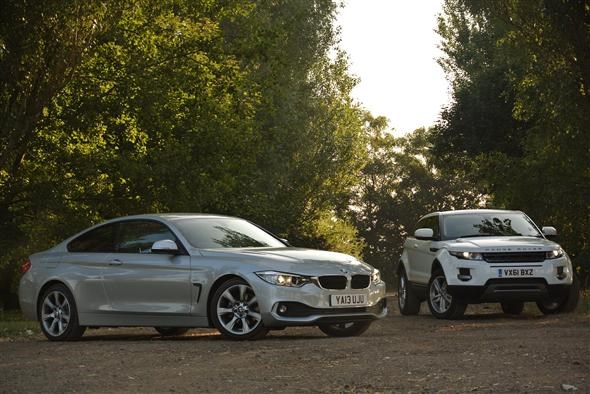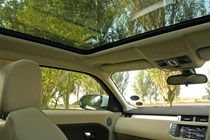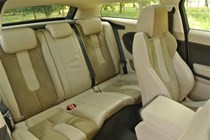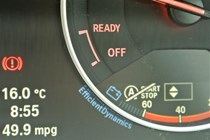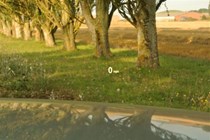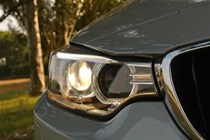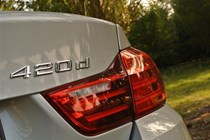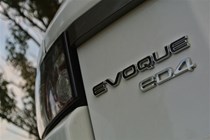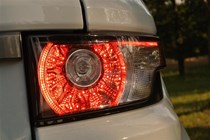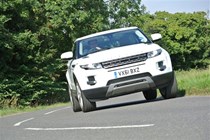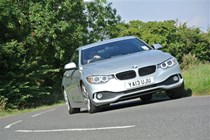Not so long ago all that mattered in the pub carpark was the badge on your keyfob, but with ranges expanding upwards and downwards, that once premium brand no longer guarantees you any one-upmanship. Now it’s style that counts, and it something both BMW and Land Rover intend to capitalise on.
Both the new 4 Series and Range Rover Evoque are coupes and, in 420d SE and Evoque Pure eD4 forms, match evenly on price. On the face of it that’s where their similarities end, but as we found out in practice it’s a closer run thing than that.
Read on to find out which shines the brightest.
Interior
Although the 4 Series is a brand new design, it looks like a careful evolution of the 3 Series coupe it replaced and is discreet enough to go unnoticed as anything new. The low-slung cabin is mostly shared with the 3 Series saloon, but it still feels like a premium product thanks to the materials used – even if our car’s colour-scheme was a bit sombre.
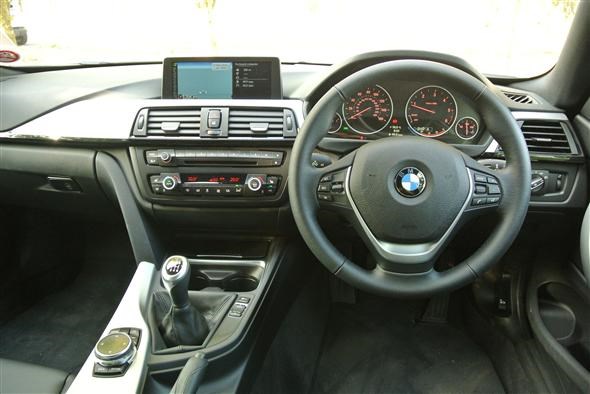
You could expect the Evoque’s cabin to feel dark and cramped on account of its squat lines and long, pillar-box like windows, but with the beige coloured materials dominating it actually feels roomier than the BMW. A word to the wise though, stains are easily spotted and our relatively fresh example already showed signs of its use. One highlight was the leather-wrapped fascia with exposed stitching, which means the Evoque feels much more of an occasion to occupy.
You’ll benefit from leather seats, climate control, heated seats, Bluetooth and DAB radio with both, though the BMW features front and rear parking sensors as standard. Sat-nav is optional on both, and the panoramic glass roof on the Evoque is a costly £790.
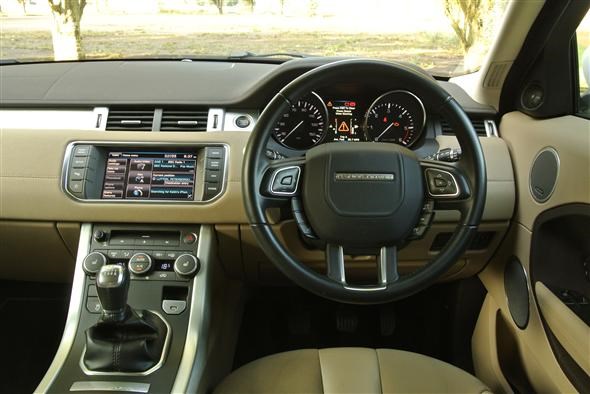
Practicality
There’s no escaping that the Evoque is the more accommodating of the pair, its tailgate opening up a more cavernous 550-litre space with the rear seats in place, the conventionally boot-lidded 420d only offering 445 litres. Both offer a 60/40 split-folding rear seat to extend the load space but the Range Rover’s shape allows it to swallow taller, bulkier cargo.
With five seats, the Evoque can also carry an extra passenger over the BMW, the rear seat of which is shaped for two with a centre console between them. Most will also find the back seat of the Range Rover a roomier place, especially in terms of headroom, but for shoulders and legs there’s little between the two.
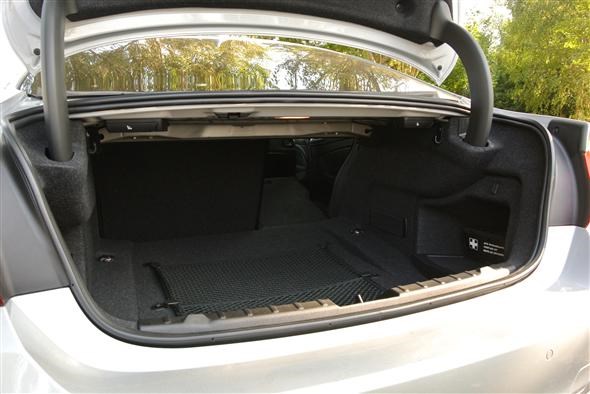
Access to the rear seats is made more convenient with front seats that slide out of the way electrically, two seconds quicker in the 4 Series. Despite being taller and having larger doors, you need the physique of a double-jointed escapologist to get in and out of the Evoque’s rear seat with any grace.
Visibility from the BMW is significantly better than from the Range Rover, particularly rearward where the Evoque’s rear window seems barely larger than a letterbox, necessitating its enormous door mirrors.
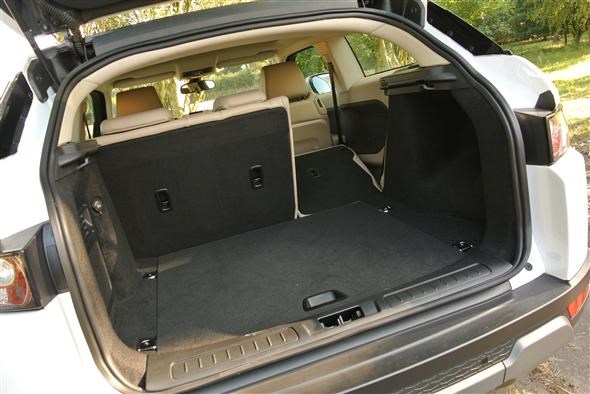
Driving
With such a commanding view ahead it’s easy to take advantage of the Evoque’s performance on twistier roads, but you’ll appreciate the extra steering feel, ride comfort and general agility of the 420d, and while neither prove particularly exciting it’s the BMW that’s the most fun to drive in a spirited manner.
At the heart of the 420d is the familiar BMW 2.0-litre diesel producing 181bhp and 379Nm of torque, the latter from only 1,750rpm. The Evoque’s 2.2-litre unit matches its rival for torque, but is over 30bhp down in power and the German model feels the more flexible.
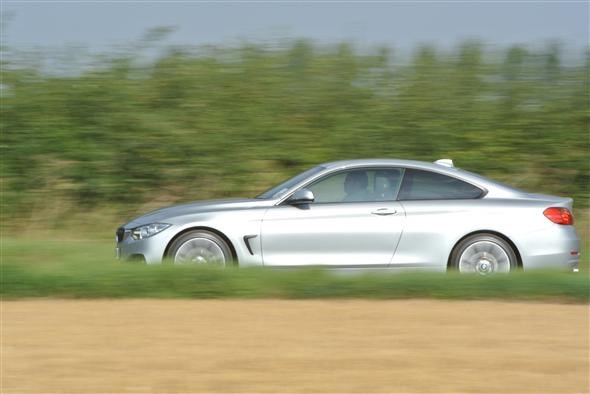
Neither feel particularly ‘quick’ though, the refinement and linear power delivery of the BMW’s engine masking its rather impressive on paper 7.5 second 0-62mph time. The gearbox in the 420d feels more direct too, though the Evoque’s lever is surprisingly short and snappy in its action.
Costs
Both fell short of the manufacturer’s economy claims in our hands, but the BMW bettered the Range Rover’s 38mpg read out by around 8mpg. And with similar CO2 emissions (124g/km for the BMW and 129g/km for the Range Rover) they’ll both cost private users £105 in annual road tax. The BMW’s servicing pack represents great value too.

For company car users the 420d falls into 19 percent BIK rate and the Evoque one point more with 20 percent. That difference means despite its higher BIK the BMW will cost £3 less per month for 20 percent tax rate payers.
Verdict
Asked at the start we’d have put money on this test having one runaway winner.
We were wrong, and the result is closer than anyone could have predicted. Choose either and there’ll be no chastising from us on your decision.
While the Range Rover feels the most special of the pair, and ticks all the boxes asked of it, the BMW feels the more complete package as a long term proposition. It doesn’t shout about its abilities in the way the Evoque does, but the BMW 420d SE’s superior dynamics and lower running costs are just enough to ensure it’ll remain a star long after you’ve got it home from the dealership.
Just so you know, we may receive a commission or other compensation from the links on this website - read why you should trust us.


